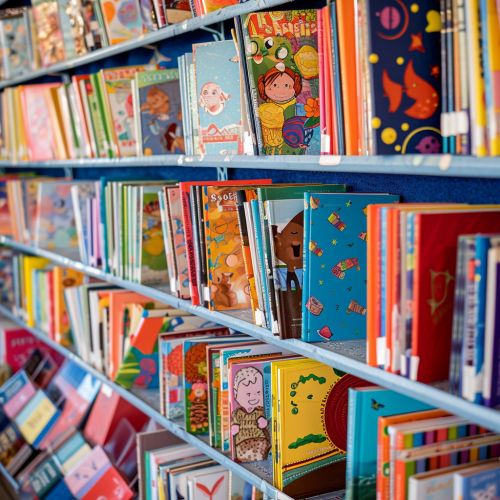Children's Literature
Overview
Children's literature is a genre of literature that is written specifically for children and young adults. This genre encompasses a wide range of works, including picture books, young adult novels, fairy tales, fables, and more. The primary purpose of children's literature is to entertain, educate, and inspire young readers, fostering a love of reading and promoting literacy.

History
The history of children's literature is a fascinating journey that spans centuries and continents. The earliest forms of children's literature can be traced back to ancient civilizations, where stories were often passed down orally from generation to generation. These early tales often served as moral lessons or cautionary tales, teaching children about societal norms and expectations.
In the Middle Ages, the concept of childhood as a distinct phase of life began to emerge, and with it, the idea of literature specifically designed for children. However, it was not until the 18th and 19th centuries, with the advent of the printing press and the rise of literacy, that children's literature truly began to flourish. During this time, many of the classic children's stories we know today, such as "Little Red Riding Hood" and "Cinderella", were first published.
In the 20th century, children's literature expanded to include a wider range of themes and topics, reflecting the changing social and cultural landscape. This period saw the emergence of children's literature that tackled serious issues such as war, racism, and poverty, as well as the rise of fantasy and science fiction genres.
Today, children's literature is a vibrant and diverse field, with books being published in a multitude of languages and formats, from traditional print books to e-books and audiobooks.
Genres
Children's literature encompasses a wide range of genres, each with its own unique characteristics and appeal. Some of the most popular genres in children's literature include:
Picture Books
Picture books are a staple of children's literature, typically aimed at children aged 0-5. These books are characterized by their emphasis on illustrations, with text often playing a secondary role. Picture books can cover a wide range of topics, from simple stories and concepts to more complex narratives and themes.
Early Reader Books
Early reader books are designed to support children as they begin to read independently. These books typically feature simple sentences, repetitive text, and a high degree of visual support to aid comprehension.
Chapter Books
Chapter books are aimed at children who are ready to move beyond early reader books, typically around the ages of 6-8. These books are longer and more complex, often featuring chapters and a more developed narrative.
Middle Grade Books
Middle grade books are targeted at children aged 8-12. These books often feature more complex narratives and themes, exploring issues such as friendship, family, and school. They can span a wide range of genres, from fantasy and adventure to historical fiction and mystery.
Young Adult Books
Young adult books are aimed at teenagers and often deal with more mature themes and complex narratives. These books can cover a wide range of genres, from romance and dystopian fiction to fantasy and contemporary fiction.
Themes
Children's literature often explores themes that are relevant to the experiences and interests of children and young adults. Some common themes in children's literature include:
Adventure
Adventure is a prevalent theme in children's literature, often serving as a metaphor for personal growth and self-discovery. Adventure stories often feature young protagonists who embark on exciting journeys, overcoming challenges and obstacles along the way.
Friendship
Friendship is a central theme in many children's books, exploring the joys and challenges of making and maintaining relationships. These stories often teach valuable lessons about loyalty, empathy, and cooperation.
Coming of Age
Coming of age is a common theme in children's literature, particularly in young adult novels. These stories often focus on the protagonist's journey from childhood to adulthood, exploring themes of identity, self-discovery, and personal growth.
Fantasy
Fantasy is a popular genre in children's literature, offering young readers an escape from reality and the opportunity to explore imaginative worlds and characters.
Impact
Children's literature plays a crucial role in promoting literacy and fostering a love of reading from an early age. It provides children with a window into different cultures, experiences, and perspectives, helping to broaden their understanding of the world. Moreover, children's literature can serve as a valuable tool for teaching important life lessons and values, such as empathy, resilience, and respect for diversity.
